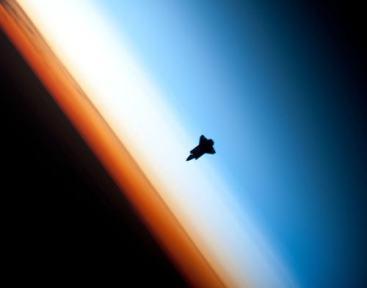GR: This is something we will have to watch. As the planet warms, evaporation increases. If the moisture reaches the upper levels of our atmosphere, it can lead to ozone depletion. In the ongoing study described below, the researchers found that storms are reaching higher than previously thought. A study of the degree to which this may be damaging the protective ozone layer is underway.

“The ozone layer in our atmosphere keeps much of the sun’s ultraviolet radiation from hitting the surface. Too much of it gives people skin cancer and can destroy plants and crops.
“Harvard researchers found that this stratospheric ozone layer above the central U.S. gets depleted during the summer, most likely as intense storms send water vapor into the atmosphere. The vapor can cause the types of chemical reactions that have spurred ozone loss in Arctic and Antarctic regions.
“The stratosphere, which extends from about 7 miles above the surface to nearly 30 miles above the ground, is one of the most “delicate aspects of habitability on the planet,” the researchers wrote in the study published in the Proceedings of the National Academy of Sciences this week.
“The Great Plains’ more frequent and violent storms get that extra energy in large part from warming waters in the Gulf of Mexico. The Harvard study shows that, in addition to storm damage, the loss of ozone threatens food security and human health.
“Humans are sensitive to even small changes in UV radiation, as are our staple crops. That’s the center of our concern right now,” said lead author of the study, Jim Anderson, a professor and researcher at Harvard University.
“Anderson and colleagues were studying summer storms over the Central U.S. and found that many were penetrating deep into the stratosphere. It was assumed that most storms only reached the top of the troposphere.
“The depth of penetration was much larger than previously thought, some 4,000 storms penetrate the stratosphere,” Anderson said.
“The findings represent an important change in assessing the risk from UV radiation in the summer, said Mario Molina, a professor and chemistry researcher at the University of California San Diego, who was not involved in the study. Previous studies have shown a 1 percent decrease in stratospheric ozone would mean about 3 percent more skin cancer cases.
“The link between bigger storms and depleted ozone above the Central U.S. comes mostly from inference: While temperature and water vapor changes from storms have been shown to deplete ozone in Arctic regions, it’s not clear yet if this is the case in the states studied—Texas, Oklahoma, Kansas, Iowa, Nebraska, Missouri, the Dakotas.
“However, “chemistry operates the same everywhere,” Anderson said.” –Brian Bienkowski (Intense storms may diminish protective ozone in Central US. — The Daily Climate).

